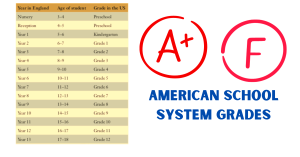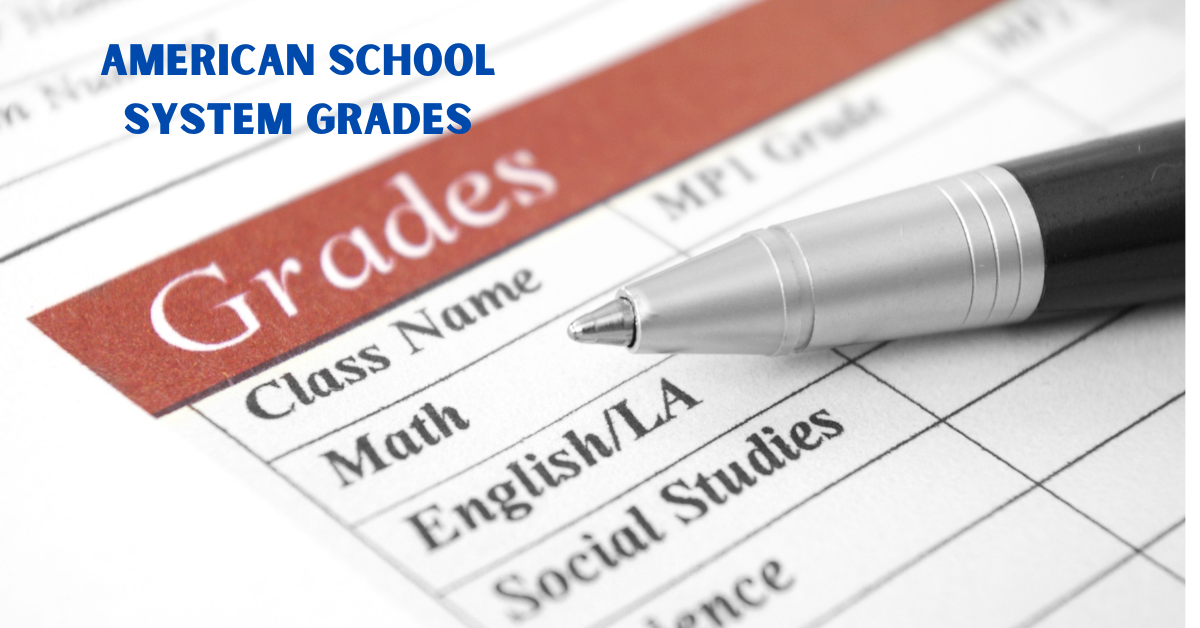The American school system is a complex and diverse system that can be difficult to navigate for both students and parents. One of the most important aspects of the American school system is the grading system. Grades are used to measure a student’s academic performance and are an essential part of the education experience in the United States.
In the American school system, they typically give grades on a scale of A to F, with A being the highest grade and F being the lowest. Each grade corresponds to a specific range of scores, with A being the highest and F being the lowest. The grading system is used to measure a student’s academic performance and is an essential part of the education experience in the United States.
What are the three types of education?
Formal, Informal, and Non-formal Education Overview Formal Education: • Structured, systematic education provided by schools, colleges, and universities. • Follows a curriculum, has a set duration, and is recognized by degrees, diplomas, or certificates. • Divided into levels like elementary school, high school, and higher education.
Informal Education: • Often spontaneous, incidental, and learner-driven. • can occur through daily life experiences, interactions, self-directed learning, reading, watching educational videos, and community events. Non-formal Education: • Organized, structured, and designed to meet specific learning needs. • can include adult education classes, vocational training, workshops, and other organized learning experiences. READ THIS –Study High School in USA for International Students: Requirements and Process
An Overview of the American School System
The American school system grades are complex due to the K–12 education structure, which includes primary and secondary education. The system is divided into preschool, elementary school, middle school, and high school. Pre-school education is optional, elementary school is compulsory, the middle school covers advanced subjects like algebra, history, and foreign languages, and high school is specialized. Grading is usually done on a letter-grade scale, with A being the highest and F being the lowest.

Grade Levels:
- Kindergarten (K):
- Typically for 5-year-olds.
- Introduction to basic skills and social development.
- Elementary School:
- Grades 1 to 5.
- Focus on fundamental subjects: math, English, science, and social studies.
- Middle School or Junior High:
- Grades 6 to 8.
- Transition phase with broader subjects.
- High School:
- Grades 9 to 12.
- Specialization in subjects and preparation for college.
Grade Nomenclature:
- Grades 1-12:
- Usually labeled as 1st grade, 2nd grade, and so on up to 12th grade.
- High School Years:
- Freshmen (9th grade), sophomores (10th grade), juniors (11th grade), and seniors (12th grade).
GPA (Grade Point Average):
- Scale:
- Typically on a 4.0 scale.
- A = 4.0, B = 3.0, C = 2.0, D = 1.0, and F = 0.0.
- Weighted GPA:
- Includes honors or AP (Advanced Placement) courses.
- Aiming for a higher GPA is crucial for college admissions.
Grading System:
- Letter Grades:
- A, B, C, D, and F.
- “+” or “-” may be used (e.g., B+, A-).
- Numeric Grades:
- Some schools use numeric scales (e.g., 90–100 = A, 80–89 = B).
Transcripts:
- Record of Grades:
- Transcripts document courses taken, grades, and GPA.
- Vital for college applications.
Honors and AP Courses:
- Honors Courses:
- More challenging than standard courses.
- Weighted GPA.
- AP Courses:
- College-level classes.
- Rigorous curriculum and exams.
- High scores may earn college credit.
Graduation Requirements:
- Credit System:
- Accumulate credits in various subjects for graduation.
- It varies by state and school district.
- Standardized Testing:
- SAT or ACT for college admissions.
College Admissions:
- Considerations:
- GPA, standardized test scores, extracurricular activities, essays, and recommendation letters.
- Holistic Review:
- Colleges evaluate students beyond just grades.
Education Pathways:
- Vocational and Technical Schools:
- Offer specialized training.
- Community Colleges:
- Provide two-year degrees.
- Four-Year Colleges and Universities:
- Grant bachelor’s degrees.
- Graduate School:
- Offers advanced degrees (master’s, doctoral).

READ THIS –
Why Should I Consider an TU Delft Excellence Scholarship 2024?
How to Apply for 2024 KPMG Nigeria University Scholarship Program
A Comprehensive Guide to Apply the 2024 IELTS and Annual IELTSing Scholarship
Eligibility – Knight-Hennessy Scholars Program at Stanford University” Apply for 2024/25
grade school age
Grade school refers to the early years of formal education, typically encompassing elementary school, with students typically aged 6–12 years old, covering grades 1 through 6 or 1 through 5, depending on the educational system in a region.
Elementary Education
Elementary education in the United States typically covers grades K–5. It is the first stage of compulsory education and is designed to provide students with a foundation in basic academic subjects such as reading, writing, and mathematics.
Kindergarten
Kindergarten, the first year of elementary education, is designed to help children transition from home to school. It is a time for children to learn to share, follow directions, and work with others. Kindergarten typically lasts for one year and is open to children who are five years old by a specific date, which varies by state.
During kindergarten, children learn basic reading and writing skills, as well as basic mathematics concepts. They also learn about science, social studies, and the arts. Kindergarten teachers use a variety of teaching methods, including play-based learning, to help children learn and grow.
Grades 1-5
Grades 1–5 in the United States are the final years of elementary education, building on the foundation established in kindergarten. Students learn advanced reading, writing, and mathematical concepts, as well as science, social studies, and the arts. They also develop life skills like problem-solving, critical thinking, and communication. Teachers use various teaching methods, including lectures, discussions, group work, and hands-on activities, to help students grow. This essential part of the American school system prepares students for success in middle school and beyond.
American School System FAQs and Questions
Is secondary school the same as high school?
YES — Secondary school and high school are often used interchangeably in many regions, referring to the same educational level. They typically cover the last few years of compulsory education before students move on to higher education or enter the workforce. The organization of education systems can vary between countries, and the terms used may differ. In the United States, these institutions typically cover grades 9 through 12 and include students aged 14 to 18.
- Can foreigners study in primary school?
- Generally, yes, but specific regulations may vary by state and school district.
- Can a child attend school in the US on a tourist visa?
- Typically, a tourist visa (B-2) is not meant for attending school, and students usually need a student visa (F-1) for full-time study.
High School:
- How do I apply for high school in the USA for international students?
- International students usually apply for an F-1 visa and then apply directly to the high school. Admissions requirements vary.
- Can international students go to a public high school?
- Yes, international students can attend public high schools in the US, but they may need to pay tuition, and regulations vary by state.
- Can you get a student visa for high school?
- Yes, the F-1 visa is commonly used by international students for high school study in the US.
- Is secondary school the same as high school?
- In the U.S., secondary school often includes both middle school and high school.
- How many public high schools are there in the US?
- There are thousands of public high schools in the US.
- Can a foreign child go to public school?
- Yes, but rules and fees may vary.
- How can I get admission to an American high school?
- Generally, apply directly to the school and follow their admission procedures.
- How much does the average boarding school cost?
- Costs vary widely, but boarding schools can be expensive, often tens of thousands of dollars per year.
- Can international students attend public high school?
- Yes, but they might need to pay tuition.
Boarding Schools:
- Which state has the most boarding schools?
- The distribution of boarding schools varies, but states like Massachusetts, New York, and Connecticut have notable ones.
- Are boarding schools expensive?
- Yes, boarding schools are typically expensive due to tuition, room, and board costs.
Miscellaneous:
- Can non-US citizens go to public school?
- Yes, but rules on fees may vary.
- What is the oldest boarding school in America?
- The Roxbury Latin School in Massachusetts, founded in 1645, is one of the oldest.
- What is the best boarding school in the US?
- Rankings vary, but schools like Phillips Exeter Academy and Phillips Academy Andover are often considered top-tier.
- How much does boarding school cost in the US?
- Costs vary but can be substantial, often exceeding $50,000 per year.
- Can international students study in public high schools in Canada?
- Yes, but fees and regulations may apply.
- Can foreign students go to public schools?
- In some cases, yes, but the rules may vary.
- How can international students study in the USA?
- Typically, through obtaining an appropriate visa (e.g., F-1) and applying to an accredited institution.


